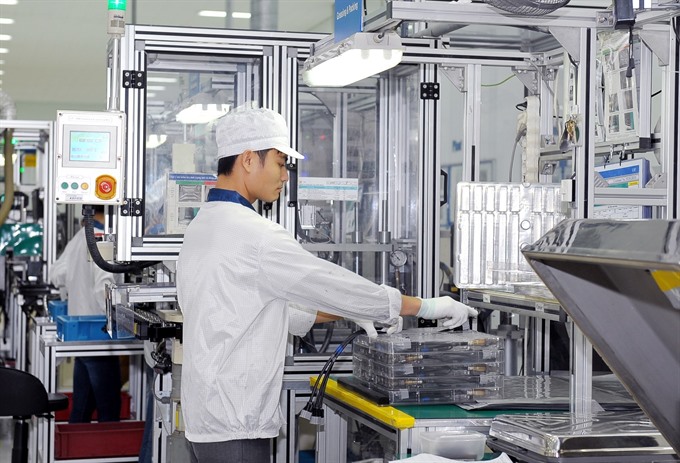 Economy
Economy

Non-equity modes of investment (NEMs) would be an increasingly important form for attracting foreign capial in Việt Nam, according to Chairman of the Việt Nam Association of Foreign Invested Enterprises Nguyễn Mại.
 |
| A foreign-invested company in Hải Dương Province. Transnational corporations are now looking for new types of investment such as franchising and licensing, which influence the management of host-country firms without owning stakes in those businesses. — VNA/VNS Photo Mạnh Tú |
HÀ NỘI — Việt Nam needs to learn about new forms of investment to raise appropriate policies for attracting foreign money, according to chairman of the Việt Nam Association of Foreign Invested Enterprises Nguyễn Mại.
Mại said non-equity modes of investment (NEMs) would be an increasingly important form for attracting foreign capital in Việt Nam.
Several Vietnamese firms already attracted foreign investment via NEMs, he said, adding that Vingroup’s production of VinFast cars and Vsmart smartphones were clear examples, in which VinGroup cooperated with foreign companies to make the products.
According to United Nations Conference on Trade and Development (UNCTAD), NEMs or new forms of investment include contract manufacturing, services outsourcing, contract farming, franchising, licensing, management contracts and other types of contractual relationships.
These are co-ordinated activities in trans-national corporations’ global value chains and influence the management of host-country firms without owning an equity stake in those firms.
Mại said NEMs are becoming increasingly important in many countries which were in the process of transforming from low to high-added value supply chains.
He cited an estimate of UNCTAD that NEMs of international production generated over US$2 trillion in sales in 2010, much of it in developing countries.
Foreign investors were increasingly paying attention to NEMs when they invested abroad, Mại said, adding that NEMs would generate bigger benefits to receiving countries because the new forms of investment enabled producers in host countries to integrate into the global value chain.
“It is necessary for Việt Nam to get updated about new forms of investment by transnational corporations to raise amendments and adjustments to foreign capital policies to attract high-quality capital inflow,” Mại said.
The draft strategy and orientations of attracting new-generation foreign investment for 2018-30 period published in March last year points out that NEMs were becoming increasingly popular in recent years, requiring amendments to Việt Nam’s foreign investment attracting policies.
The draft said new forms of investment would enable Việt Nam to take part in the global value chain.
Direct investment and NEMs would not eliminate each other, the draft said, adding that transnational corporations would participate in the host markets through NEMs first then decide to buy equity through the foundation of subsidiaries or venture companies later.
Policies now should focus on not only attracting foreign direct investment but also NEMs, the draft said. In addition, policies must be developed with appropriateness to the development of the global value chains together with enhancing Việt Nam’s production capacity and competitiveness.
According to Mại, merger and acquisition (M&A) was also an important form for attracting foreign capital.
Mại said if investors took part in corporate governance after M&A, the capital should be regarded as direct investment.
Việt Nam was also seeing a busy M&A market as the country was speeding up the privatisation of State-owned enterprises and targeting to attract foreign investors in the process, he said.
Statistics of the Ministry of Planning and Investment showed that foreign investors registered to pump a total of US$35.46 billion into Việt Nam last year, in which $9.9 billion was for capital contribution and buying states, a rise of nearly 160 per cent over the previous year. — VNS




